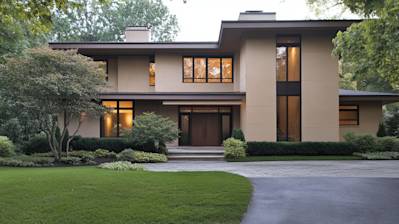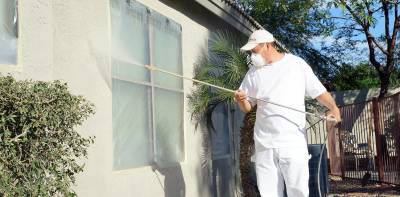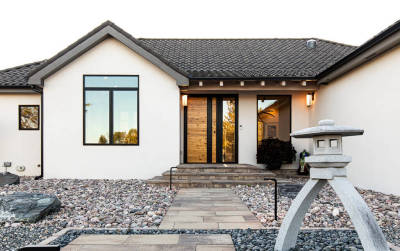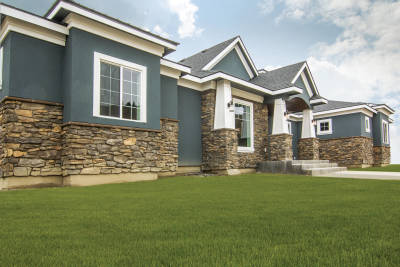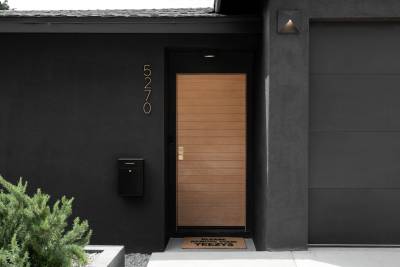Stucco, a type of plaster made from cement, sand, and water, is a common material used in house exteriors throughout the world. However, painting stucco can be a bit tricky if you don't know the proper technique. In this article, we will guide on how to paint stucco correctly and efficiently. We will discuss the materials needed for the job and the steps required, so you can paint stucco like a pro.
Understanding the Basics of Stucco
Stucco is a type of coating used commonly on exterior walls but, it can also be used on interior walls. Its textured surface gives properties a unique finish and aesthetic appeal. However, over time, stucco can become dingy or faded, and might require a fresh coat of paint.
What You'll Need: Tools and Materials
Before we delve into the step-by-step guide on how to paint stucco, it's important to ensure you have all the necessary tools and materials. Here's what you'll need:
- A high-quality acrylic paint
- Stucco patching compound
- Pressure washer
- Paint sprayer or roller
- Drop cloths
- Safety goggles and gloves
Preparation: The Key to Great Results
Just like any other paint job, the results you get when painting stucco strongly depend on the preparation you do. Here's how you should prepare your stucco for a fresh coat of paint:
Perform an Inspection
Stucco is quite durable, but it can develop cracks or chips over time. Inspect your stucco thoroughly. Look for any signs of damage and repair these areas using a stucco patching compound before you begin painting.
Clean the Stucco
You should thoroughly clean your stucco before applying paint. Dirt or dust on stucco can cause the paint to apply unevenly or chip off quickly. Ensure that every bit of dirt, mold, and grime is removed. You can use a pressure washer for this.
Painting Stucco: Step By Step
Once your stucco is repaired and cleaned, you're ready to start painting. If done correctly, you'll have a fresh, new-looking exterior that can last up to a decade. Here's how to paint stucco:
1. Protect the Area
Before you begin painting, place drop cloths on the floor to protect it from any paint drips. Also, cover any nearby plants, fixtures, or furniture to avoid accidental spatters.
2. Apply the Primer
To ensure that the paint adheres adequately to the stucco, you'll need to apply a primer. This step is particularly important if you're painting stucco for the first time, or if you're drastically changing the color. Apply the primer evenly on your stucco using a sprayer or roller and let it dry.
3. Apply the First Coat of Paint
Once the primer is completely dry, it's time to apply your first coat of paint. Using a paint sprayer or roller, apply the paint evenly. Take care of any crevices or textured areas, ensuring that they're also covered.
4. Apply a Second Coat (If Needed)
Your stucco color might not be as vibrant as you'd like it to be after one coat, especially if it's a dark color. If necessary, apply a second coat but ensure the first one has dried completely before doing so.
By following the steps in this guide, you should now have a clear understanding of how to paint stucco properly. With the right preparation and technique, your freshly painted stucco can last and look great for years to come.
Frequently Asked Questions about How to Paint Stucco
How should I choose the right paint for stucco?
When choosing paint for stucco, consider buying a high-quality acrylic latex paint. Acrylic latex paint allows moisture to escape the stucco and resist peeling or blistering. The quality of the paint you choose can greatly influence how well it adheres to the stucco surface and how long it will last.
Can we paint stucco in any weather condition?
No, extreme weather conditions like intense heat, high winds, or rain can impact the painting process. Ideally, you should paint stucco when the weather is calm, dry, and over 10 degrees Celsius or 50 degrees Fahrenheit. Try to choose a time when there's no rain forecasted for a few days after you paint to allow the paint to fully dry.
How many coats of paint does stucco require?
Generally, stucco requires two coats of paint. After applying the first coat, let it completely dry for at least two hours before applying the second one. This ensures optimal coverage and the longest lasting result.
Is primer necessary before painting stucco?
It depends on the condition of the stucco. If the stucco is in good condition and if you're painting it a similar color to the existing one, you may not need a primer. However, if the stucco is damaged or if you're making a dramatic color change, using a primer can help conceal imperfections and make the paint job look more professional.
What’s the best way to apply paint to stucco?
The best way to paint stucco is by using a roller with a thick nap, which can handle the texture of stucco. Start at the top and work your way down to prevent drips. For corners and edges, an angled brush can reach areas that the roller can't.
Should I hire a professional to paint stucco?
While many homeowners can paint stucco on their own with the right tools and preparation, hiring a professional can save time and ensure the job is done correctly. Professionals have the experience to tackle potential issues, and they can often complete the project faster than a DIYer could.
How should I take care of stucco after painting?
A fresh coat of paint should keep your stucco in good condition for many years. However, to maintain the paint's appearance, it's advisable to wash your stucco walls once a year with a garden hose and mild detergent. This will help remove dirt and prevent mildew and mold growth.
How long does stucco paint last?
With a high-quality paint, you can expect your exterior stucco paint to last 10-15 years before it needs repainting. The longevity of stucco paint depends on the weather conditions in your area, the quality of the paint used, and how well you maintain it.
Pros & Cons of Painting Stucco
Pros of Painting Stucco
Visual Enhancement
- Painting stucco offers the opportunity for visual enhancement. It allows you to change the aesthetics of your home and create a fresh, new look. A well-chosen color scheme can make your stucco exterior seem more modern, traditional, or match any other preferred style.
- It also gives you a chance to cover up any stains, discoloration, or inconsistencies in the original stucco finish.
Durability and Maintenance
- When you paint stucco, it provides a protective layer against weather elements like wind, rain, and sun exposure, increasing the stucco's lifespan.
- Quality paint can also prevent mold and mildew. This, in turn, reduces future maintenance or stucco replacement costs.
Variety of Choices
- There are numerous color options available when it comes to painting stucco, providing tremendous flexibility in design.
- You can choose between acrylic and elastomeric paint, each with its own unique benefits depending on your specific needs and climate.
Cons of Painting Stucco
Preparation and Application Process
- Painting stucco is a labor-intensive process that requires diligent surface preparation. Any cracks or damage in the stucco must be repaired before painting to ensure a smooth finish.
- The process of painting stucco can be time-consuming and take several days to complete, particularly when multiple coats are needed.
Long-Term Commitment
- Once stucco is painted, it's often a permanent decision. Removing paint from stucco is extremely difficult and may cause harm to the underlying stucco.
- The necessity for regular repainting could become a recurring maintenance issue, as paint can peel, crack, or fade over time.
Moisture Concerns
- If not properly executed, painting stucco can create a moisture barrier that traps water within the wall, potentially leading to structural damage over time.
- Painting stucco might also mask symptoms of serious underlying problems such as leaks or damages to the stucco which may be more effectively addressed by a complete stucco replacement.
Conclusion
Summary
It's clear that learning how to paint stucco can breathe new life into your home or commercial property. Beyond aesthetic appeal, painting stucco provides an additional layer of protection against the harsh elements. Remember, the key to achieving an excellent outcome is careful preparation, using quality paint and equipment, and applying steady, even strokes.
Taking on a how to paint stucco project requires some work, but it's worth the effort. It’s all about having the right information, taking the necessary preparation steps, and applying patience throughout the painting process. By following these guidelines, you'll give your stucco surfaces a fresh, visually appealing, and lasting coat of paint.
Don't get overwhelmed by the thought of how to paint stucco. The process may be a bit different than painting smooth surfaces, but it's certainly achievable. Plus, it's a cost-effective way to maintain your property's stucco surfaces while adding a personalized touch. You’ll not only enhance the aesthetic appeal of your space but will contribute to its preservation for years to come.
About Atlas Stucco
Welcome to Atlas Stucco, your dedicated stucco service provider in Sacramento, CA. With a rich history and a commitment towards delivering quality, we dare to stretch the boundaries of design and finish. At Atlas Stucco, we bring a blend of innovation, artistry, and perfection to create outstanding exteriors for our clients. Our experienced and expertly trained team is passionate about providing affordable, durable, and aesthetically pleasing stucco finishes that transform your property's appeal. Come and experience the Atlas Stucco difference today!
Tags: stucco painting, painting techniques, DIY projects,



